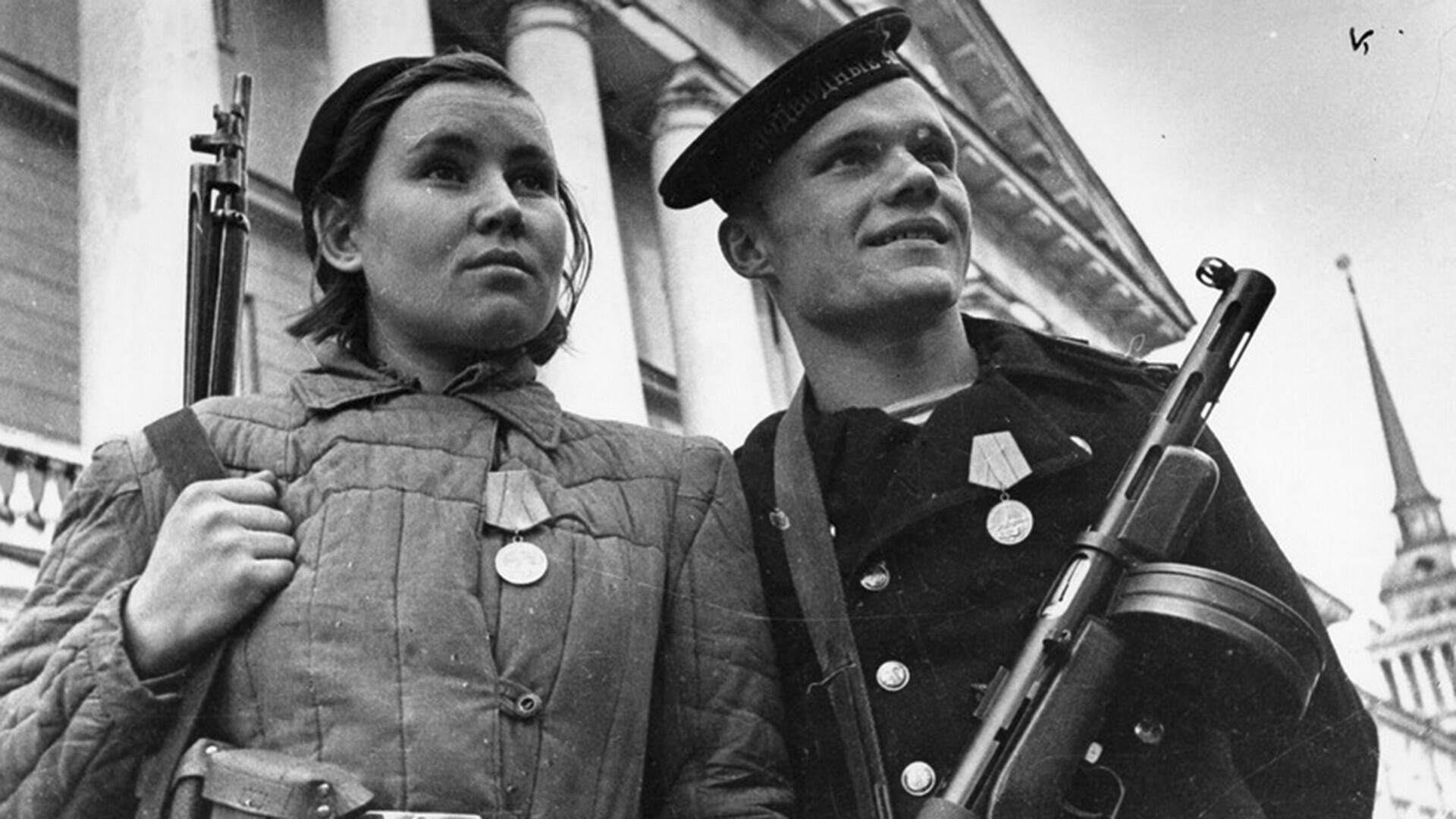For the entire 900 days of the blockade, photographer Boris Kudoyarov worked in the besieged city. His ‘Leningrad Cycle’ has become a classic of war photo reporting and it’s an invaluable testimony to the human feat of Leningrad’s denizens.
It is impossible for a modern person to fully comprehend the tragedy that the Soviet people experienced during the 900 days of the Siege of Leningrad. The city was cut off from food supplies and there were constant problems with electricity, water supply and heating. Residents were forced to literally survive – burn books and furniture for warmth, bathe in the ice of the frozen Neva River, cook soup from wallpaper glue… From September 1941 to January 27, 1944, when the blockade was finally lifted. More than a million people perished.
Boris Kudoyarov was a war correspondent for the ‘Komsomolskaya Pravda’ newspaper. He made more than 3,000 shots in the besieged city, taking pictures of both the life of ordinary people and soldiers-defenders in the first echelon. Thanks to his emotional photos, people today can get an idea of one of the most terrible episodes of World War II, albeit distant.
Take a look at some of his unique works below.
Cabbage instead of roses, 1942
Nevsky Prospect during the siege, 1943
Defenders of Leningrad, 1941-1944
Pushkin town. Alexander Palace, 1944 (This Leningrad suburb was occupied by the Nazis and they left a whole cemetery in the courtyard of the former imperial palace).
Ladoga Lake. Bread to Leningrad, 1942
Air Defense post atop of the St. Isaac's Cathedral, 1941
Leningrad under the siege. Evacuation of the wounded after shelling, 1943
A street in the besieged city, 1942 (the announcement reads "The enemy at the gates of Leningrad", "All forces to defend our native city!" and others)
Residents of the city and servicemen reading the text of the order to the Leningrad Front troops to lift the Siege of Leningrad, 1944
Defenders of Leningrad, 1941-1944
Streets of the besieged city, 1941-1943
Nevsky Prospect, 1941
Ladies serving in air defense units, 1941–1944
Blockade Nevsky Prospekt, 1941 (inscription on the fence: "Quiet passage. Dangerous. Unexploded bomb.")
Shelling aftermath on Nevsky Prospekt, 1942
Evacuation, 1941
A cameraman on a street of the besieged city, 1941
Dmitry Shostakovich's Seventh Leningrad Symphony performing at the Leningrad Philharmonic, 1941
Streets of the besieged Leningrad, 1941
An air defense post, 1941-1944
A street in Leningrad, 1942
A group of sailors on the Dvortsovaya (Palace) Embankment, 1942
Keep studying, 1942
Nevsky Prospect, 1941-1944
A street of the besieged city, 1942 (the poster reads: "Red Army soldier, save")
Battles for the liberation of Leningrad from the blockade. The 1st line of defense of the Germans, 1944
Fighting in Pulkovo, a suburb in Leningrad, 1944
Streets in the besieged city. A waiting line for a fresh newspaper, 1942-1943
The facade of the destroyed Peterhof Palace, 1943
Photos by Boris Kudoyarov and other photographers can be seen at the ‘The Face of the Blockade’ exhibition, which will be on display in the ‘ROSPHOTO’ museum and exhibition center in St. Petersburg from January 25, 2024.
Dear readers,
Our website and social media accounts are under threat of being restricted or banned, due to the current circumstances. So, to keep up with our latest content, simply do the following:
- Subscribe to our Telegram channel
- Subscribe to our weekly email newsletter
- Enable push notifications on our website
- Install a VPN service on your computer and/or phone to have access to our website, even if it is blocked in your country
If using any of Russia Beyond's content, partly or in full, always provide an active hyperlink to the original material.
